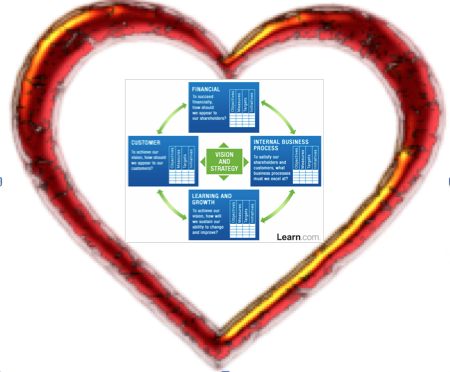 I can’t believe I am getting caught up in the ‘linking of blog topics to holidays’, but after having some fun with the whole Suberbowl thing, I figured why not get caught up in today’s Valentines Day madness.
I can’t believe I am getting caught up in the ‘linking of blog topics to holidays’, but after having some fun with the whole Suberbowl thing, I figured why not get caught up in today’s Valentines Day madness.
While Valentines day is positioned as a way to demonstrate your love, passion, and commitment to your significant other, I am convinced that all this was really created and perpetuated by a secret cartel of rose growers, flower shoppes, jewelery stores, restaurant owners, and chocolate retailers. But whoever is responsible for this madness, it’s still a big day that is full of expectations, and a day that most of us in committed relationships would be advised to “deliver on” effectively. And by “effectively”, I mean BEYOND expectation!
So how on earth am I going to connect Valentine’s day to the topic of performance management? Well, believe it or not, there are more than a few ways to make the “tie in”. For example, one is to do what most did with their Suberbowl blogs and simply focus on all of the statistics and trends around V-day, like $$ spent and volume of product purchases. But that would be too easy, and I suspect there will be more than enough of that on today’s blog sites and news reports.
Instead, I’ll focus on something that may actually yield some real value to you if you want to protect and nurture that relationship with your “main squeeze”, by providing you with a simple “performance framework” to make sure you get through the day with “everything” in tact.
Applying the basic principles of balanced scorecard and performance management, we’ll start with the “vision” and “mission”. One thing to remember when you develop a performance framework is that your vision and mission should always be viewed relative to the challenge you are trying to manage. But as a general rule, we view a vision from a longer term perspective, and a mission from a shorter term horizon.
So what is the the vision for our relationships with our significant other ? For the hopeless romantics in the crowd, the instinctive reaction would be to focus on big aspirations….things like “a long and happy life”, “to love, honour and cherish”, “to grow old together and die in each others arms”, and the myriad of other syrupy catch phrases that are there for the taking. For others, it might be something as simple as “a week without nagging” or “getting my husband to learn to ‘pick up’ after himself”. It’s all relative to your situation and ambition, and how far you are away from it. For now, we’ll stick to a vision geared to a “happy and healthy life with my loving spouse” (its a good common denominator for all of the above), along with some specificity about what that ‘looks like’ in terms of happiness, healthiness, etc…But since vision definition is not the main purpose here, I’ll leave it at that. You’ve got the idea.
Missions are generally shorter term in nature and focus on intermediate milestones in pursuit of the long term vision. For companies, they are still usually multi-year in nature, but for our purpose here, I’m going to break protocol and make the mission simply “getting through the big day”. Again, my purpose today is getting to a discussion of our specific objectives and KPI’s, not to do a tutorial on strategic planning. But it’s worth pointing out that, depending on where you stand (organizationally, timeframe wide, role etc), what looks like a mission to some, may feel like a strategy to others, and vice versa. Thinking about a mission from a military perspective helps me sometimes (and no, I’m not making a parallel between a military event and my marriage, although most of us could probably relate to that from time to time). Suffice it to say that missions are sometimes big, and sometimes small; may be shorter term or could be longer term. And while from the perspective of top leadership something might look like a tactic, troops may in fact view the very same thing as their “mission”. Its all context dependent.
So just for today, lets consider the mission as “getting through Valentines day 2011 with (as I said before), “everything in tact”-which for me, means not having to make apologies for my forgetfulness, incorrect gift choices, and if I’m lucky, a happy and grateful spouse who has embraced my gesture of appreciation.

Now, for the fun part, lets talk Objectives and KPI’s...In business, the balanced scorecard purists would say there are 4 basic categories (perspectives) within which our objectives, goals and KPI’s should be managed. These “big 4″ most often include: customer, financial, employee, and internal (operations and processes). Sure there are other variants of this…but let’s hang with these for now, and try and apply these to the “v-day specific” mission we defined above.
Again, the flow will be perspective–objective—and kpi’s ( the indicators through which we’ll measure our success).
I. Customer (Ms. Valentine)
For our application today, we’ll define “Ms or Mr Valentine as “the customer” in our little example. After all, it is their perspective that will make the determination of whether we “get through the day in tact”. So what are our objectives for today? Here are mine:
- Objective 1: Avoid Disappointment (KPI: # of times Mr. Valentine says “Sh**, I forgot!!!” or “I wish i would have done…” to himself at any point throughout the day—2011 target=0)
- Objective 2: Delight my Valentine (KPI: # of times the wife says “oh Bob, you shouldn’t have!!!” —2011 target=>2)
- Objective 3: Demonstrate Sincerity ( KPI: # of verbal or non verbal signals suggesting that I “was just trying to make up for past screw ups”, or “trying to get an early jump on the objective below—2011 target=1 (its usually more than that :))
- Objective 4: Generate “reciprocal appreciation” (KPI: Gestures of Reciprocal Appreciation- I’ll term these GRA’s for short (KPI and target =confidential!!! :)) —SPECIAL NOTE- be careful this one is not obvious, or you will jeapordize #3 above
II. Financial (Don’t break the bank)
Of course, achieving the above is easy if your resources are unlimited. But for most of us, be it money or time, it’s never that easy. So you’ll have to accomplish the above within your means and ability. Let’s try these:
- Objective 1: Stay on Budget (supporting KPI’s: variance to planned budget—target=0 variance)
- Objective 2: Maximize ROI of gift purchases (# GRA’s per $ of V-day investment—2011 target =also Confinential-i.e. providing target would provide clues as to the target of the GRA metric above)
III. Operational (Make the day run smoothly)
In any business, there are those things that are reflective of how streamlined or smoothly the operation or process performs. Personally, I see these as “level 2″ contributors to the “customer” and “financial” objectives, but they are no less important, and if they are not proactively managed, they will cause you to fail. A few of those that are pertinent to my success on my spouse’s special day include:
- Objective 1: Ensure timeliness of delivery (KPI: Deviation from planned delivery times—2011 target= <+/- 15 minutes)
- Objective 2: Spread the “joy” throughout the day – i.e. sometimes, lots of little surprises leading to the big one is best! (KPI: Interval between surprises—2011 target= 3 hours)
- Objective 3: Time the big surprise well (KPI: be on time (for dinner, the big gift, etc…)—target =0 deviation from plan)…or else there may not be time for the GRA that may follow.
IV. Employees (Managing the Influencers and Stakeholders)
Over the last few decades, I have found that getting through the day can be quite challenging amidst the various distractions that can emerge. Thats why its important to arm yourself with some help. For me, there are three sources of that “help”, and each plays a valuable role in navigating the special day.
- Objective 1: Keep the delivery guys happy- (KPI: generate one thank you from each delivery vendor—2011 target=100%)
- Objective 2: Leverage the little ones…not only can your kids they help, but they can also be instrumental in “spreading the joy” throughout the day with small gifts or gestures of appreciation to mommy. The real objective here is simply to keep the day top of mind, and minimize forgetfulness and/ or unplanned delays (KPI: # Delays/ forgotten deliveries from the kids—target= <2 (their teenagers after all!))
- Objective 3: Impress the “influencers” (KPI: # of relevant people the wife brags to (inlaws, friends, etc.)—2011target= 3)
Now there are clearly strategies and tactics that support each of these. In your company, these are the initiatives and investments that help you achieve all this. But for today, these will be little things like tipping the driver, timing your deliveries for maximum “optics” and co-worker recognition, setting your teenagers alarm clock…you get the idea.
And of course, there are the weightings for the objectives and KPI’s themselves. For example, you don’t want to overweight the financials, or else you may risk the GRA effect. Or overweighting the contribution of others (like your kids) may add unecesary risk to the equation, and could also jeopardize the sincerity objective. Again, use your judgement here.
But hey, isn’t that what building a performance measurement framework is like in real life? It’s both an art AND a science. And of course, there are the intangibles and things you just can’t track or keep score of . And often, especially for those who are single, you do need a competitive advantage. So be careful about everything you declare and put in writing (which may conflict with the advice of the balanced scorecard purists), or else you may risk your competetive advantage.
As I wrote this, I found myself sometimes getting sidetracked (duh…really?)…thinking about things like leading indicators, scenario modeling, gaming theory, contingency planning etc…so, lucky for you, I had to keep bringing myself back on point. Otherwise this could have really led down some interesting and wacky paths.
But hopefully, I’ve given you enough fodder to help keep your day on track, and “if your lucky”…Nevermind, I’ll leave it at that. Use your imagination, and good luck!
Author: Bob Champagne is Managing Partner of onVector Consulting Group, a privately held international management consulting organization specializing in the design and deployment of Performance Management tools, systems, and solutions. Bob has over 25 years of Performance Management experience and has consulted with hundreds of companies across numerous industries and geographies. Bob can be contacted at bob.champagne@onvectorconsulting.com



Nice job Bob. I actually really like examples like this so that I am drawn to think about a concept “bigger” than I otherwise would have. Hope your Valentine’s Day is grand.
Thanks for the feedback Tammy…and the RT’s. Lucky for me, I’ve got good writers and bloggers to learn from. That last bog of yours was like a tutorial on taking a simple idea and causing some real reflective thinking.
Outstanding.
This is true competency: to apply theory to something apparently unrelated and making sense of it!